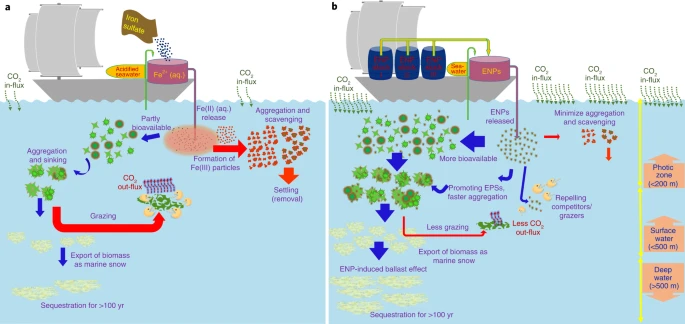Nanowerk November 29, 2022
Artificial ocean fertilization (AOF) carbon sequestration efficiency appears lower than natural ocean fertilization processes due mainly to the low bioavailability of added nutrients, along with low export rates of AOF-produced biomass to the deep ocean. An international team of researchers (UK, Thailand, USA – University of South Carolina, industry, Pacific Northwest National Laboratory) explored the potential application of engineered nanoparticles (ENPs) to overcome these issues. Data from 123 studies showed that some ENPs may enhance phytoplankton growth at concentrations below those likely to be toxic in marine ecosystems. ENPs may also increase bloom lifetime, boost phytoplankton aggregation, and carbon export, and address secondary limiting factors in AOF. Life-cycle assessment and cost analyses suggested that net CO2 capture is possible for iron, SiO2 and Al2O3 ENPs with costs of 2–5 times that of conventional AOF, whereas boosting AOF efficiency by ENPs should substantially enhance net CO2 capture and reduce these costs…read more. Open Access TECHNICAL ARTICLE

Existing and proposed conceptual models of AOF. Credit: Nat. Nanotechnol. (2022).